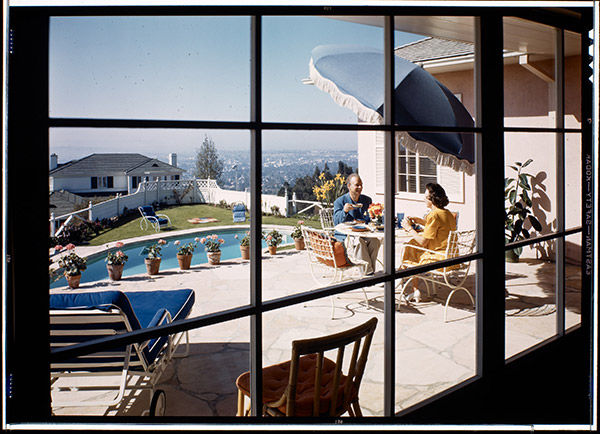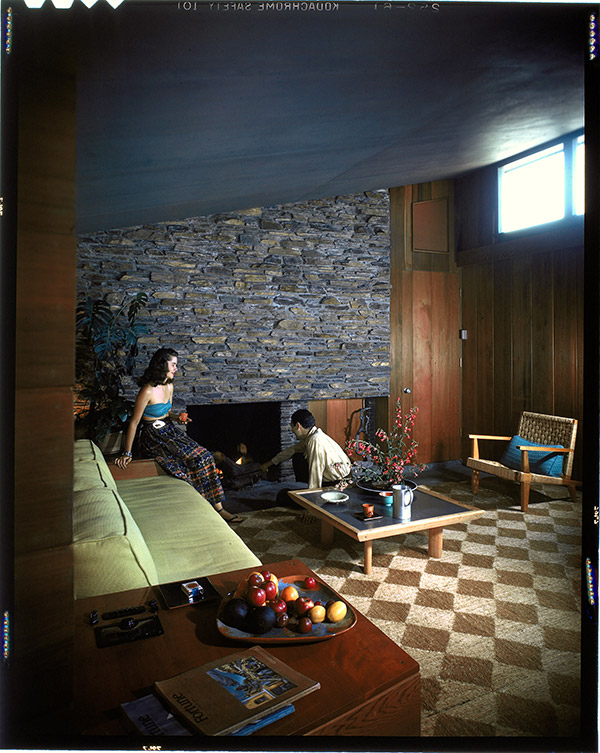
View to patio and swimming pool, Mr. and Mrs. Jack Moss residence, Pacific Palisades, c. 1944, Maynard Parker
If you were a homemaker looking to entertain in the new suburbs that flourished after World War II, you might have found inspiration in the work of Los Angeles-based photographer Maynard Parker.
“These images are like stage sets for the greatest ideal of California living,” said Jennifer Watts, curator of photographs at the Huntington Library and editor of the book Maynard Parker: Modern Photography and the American Dream. “They make us believe we can live in that perfect, beautiful, sun-kissed world of parties and gracious living.”

Roasting hot dogs on the patio fire pit, Cliff May residence, Riviera Ranch, Los Angeles, c. 1943, Maynard Parker
At the height of Parker’s career, his pictures appeared all over—in magazines including Architectural Digest, Better Homes and Gardens, and Sunset, and in advertisements for department stores, furniture manufacturers, and suburban developers. He enjoyed professional relationships with the architect Frank Lloyd Wright and his disciples, and a close relationship with builder and developer Cliff May (who popularized the California ranch house).
Julius Shulman may be the better-known photographer of houses from the midcentury period—his images captured the stripped-down, carefully curated mod interiors, dramatic walls of glass, and boxy steel frames of Richard Neutra, Rudolf Schindler, and other stars of the so-called International Style of architecture.
But Parker’s images “were much more typical of how people were living at the time,” Watts said. “It was a kind of middle-class modernism.”

Norris and Elizabeth Goff residence, Encino, 1941, Maynard Parker

George Turner residence, La Canada Flintridge, c. 1947, Maynard Parker

Living room, Woodman Plaza model house, Pacoima, c. 1952, Maynard Parker
This was the aesthetic that the magazine House Beautiful, where Parker published many of his images, was cultivating at the time. The magazine’s editor, Elizabeth Gordon, believed that people should live a stylish but practical life with up-to-date conveniences (for instance: dishwashers) and warm, colorful pieces that showed the owner’s character. She featured photos in the magazine that spoke to women who needed help furnishing their homes to be beautiful—and practical for growing families with young children.
With the passage of decades, some of Parker’s images may seem a little kitschy or sentimental—what’s with the formal, candle-lit table whose center of attention is a round terrine surrounded by upright frankfurters? But there’s no doubt that Parker’s images captured some alluring moments of midcentury domestic bliss. They look so inviting you just want to pick up that wine glass and lie down in the empty lounge chair.

Frankfurter dish display for the Southern California Gas Company, 1945
The Huntington holds 60,000 of Parker’s negatives and transparencies. More than 12,000 of them are available online.
Text of this post © Zócalo Public Square. All rights reserved.

See all posts in this series »




Comments on this post are now closed.